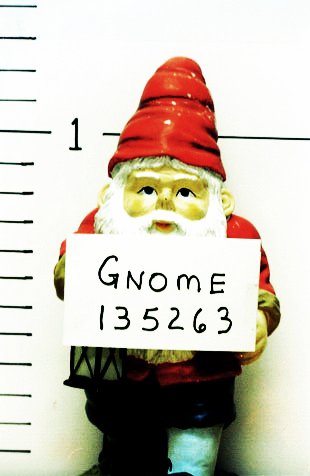
Is Ned in trouble?
Here’s a quick post to wrap up the series on Brower’s and Rea’s constitution theory of the Trinity. First, it’s striking how original and self-consistent their approach is. It is rare to find something this new, and this well thought through on such an old topic. They’ve carefully carved out a unique position, one which has a motivation outside of theology (i.e. solving the reputed problem of material constitution) as well as in. Further, they’re trying to construct a mainstream, orthodox theory.
The above is enough to recommend it in the eyes of some of my fellow philosophers. I’m afraid that I’m not as sympathetic. Here I’ll briefly recap my misgivings and maybe add a few.
None of is even close to constituting (sorry) a killer objection, but to me, taken together, they sour the deal. The last four are more important than the first five.
- You have to be a metaphysician to understand it. Best as I can tell, this theory is totally off the map of theologians. It is probably destined to remain so. You have to be able to get your head around the concept of numerical sameness without identity, and you need to understand why we might want to say there’s such a thing. Why are these points objections? Well, if you think the doctrine of the Trinity is a revealed one, it needs to (1) have been believed by previous Christians, and (2) be understandable fairly widely.
- To believe it, you have to be a metaphysician who (1) believes in the problem of material constitution, who also (2) accepts the Aristotelian numerical sameness without identity solution. Of course, you might think that the idea of numerical sameness without identity only applies to the Trinity. That’s a consistent position, but it’ll be lacking in motivation, as it’ll look like the only reason you believe in it, is that it provides a consistent reading of the “Athanasian” creed (etc.). It would remain on the level of a mere lawyerly defense, in the manner of van Inwagen’s relative identity approach. Also, if you don’t believe in the theory applied to material objects, you’ll give ‘em the old “blank stare” when they tell you that the Father and the Son are non-identical, and yet they “are to be counted as one”.
- Sorry, but I don’t have a concept of “immaterial stuff”. You can say that there something in the Trinity which “plays the role of matter”, i.e. which is somewhat like matter in, say, a statue, but I just draw a blank. It’s not that I can’t picture it; it’s that I fear this talk is unintelligible. Compare: Metaphysician Renee tells us that “There’s something that plays the role of a Cartesian soul” in every golf ball.” And you say: “So, it’s a subject of consciousness?” She says, “Nope.” You say, it’s immaterial and extensionless, and she’s says “Nope, and nope. But it is something which is IN the golf ball, and not at all in the way that a sailor is in a ship. Dualism is true, right? Well, there’s something somewhat like a soul in golf balls.” Do we really know what she’s talking about? Nope.
- Related problem: by calling this something-like-an-immaterial-stuff in the Trinity “the divine essence”, they make the theory look more traditional than it probably is. The church fathers are brimming over with talk of the divine nature, essence, or “godhead”. But – these guys are (sort of) Platonists, not Stoics. Probably few of them thought of homoousios in terms of sameness of stuff.
- I’m still worried about the problem of “God”, “Yahweh”, and “the creator of the world” being ambiguous. Not sure how big a problem it is, but it seems it is one.
- It seems to me that they secure monotheism at the price of redefining what is meant by a “god”. This redefinition isn’t totally unmotivated, but it’s still a hard pill to swallow.
- Bill Craig’s objection stands – how can one portion of matter (or immaterial quasi-matter) simultaneously constitute things with incompatible (present-based, non-modal) properties? (his Venus and David example) Without answering this, the account is at best incomplete, for it’s not clear that it is consistent.
- This theory does not, despite how it first looks, provide a literal metaphysical account of the Trinity, nor does it try to. It’s all, in the end, an analogy, and one of several incompatible ones they offer in this clear, popular-level paper. In short, the metaphysical fireworks are for the philosphers. To common folk, they preach good, old-fashioned seemingly inconsistent analogies: three men, Ned and Lumpy, and multiple personality disorder. To be fair, they say they think theirs is the best analogy, but the point is, if like Craig you’re holding out for a believable and non-analogical metaphysics of God, you won’t find it here. I realize that some will take this last concern as something to recommend the theory, being convinced (probably by the church fathers) that multiple and admittedly pretty bad analogies are the best we could hope to do.
- It’s clear from the second paragraph of their popular paper that they accept the common apologetics arguments to the effect that the creedal statements providing the boundaries for trinity doctrines are deducible from the Bible. I think these arguments are quite weak. But that’s a topic for future discussion, or rather, for a whole series of ‘em.
